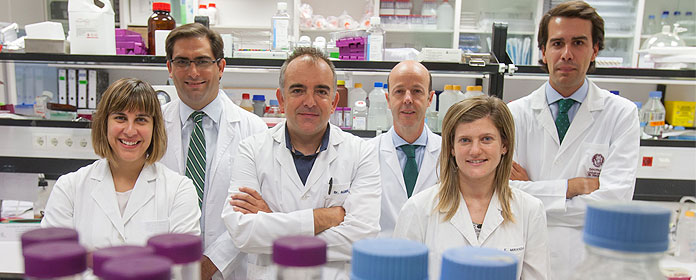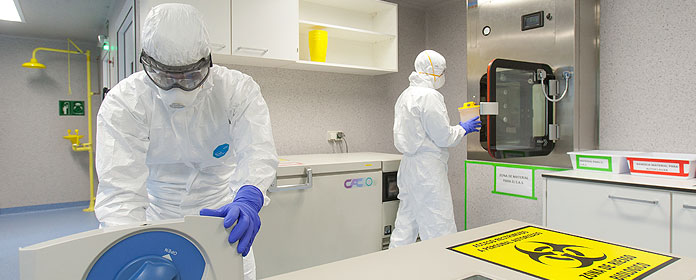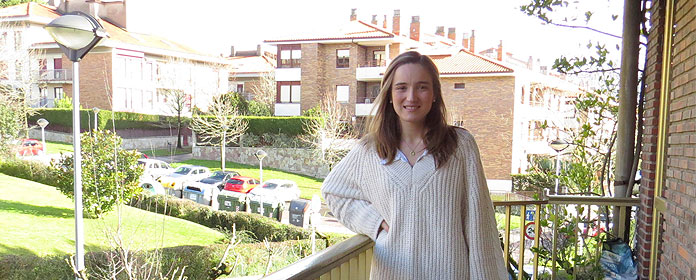Mathematical algorithms to target cancer metabolism
Nature Communications publishes a work with a new computational method developed by researchers at the University's Centre for Biomedical Engineering.

A group group of researchers from the Biomedical Engineering Centre of the University of Navarra - made up of engineers from Tecnun and CEIT -IK4 and scientists from the CIMA y Clínica Universidad de Navarra- has developed a set of mathematical algorithms that enable vulnerabilities in tumour metabolism to be located which, when tackled, would prevent malignant cells from continuing to develop. This is reported in article published today in the journal Nature Communications.
As Iñigo Apaolaza, first author and researcher at Tecnun, explains, "tumour cells need a series of compounds to grow and survive. To manufacture them, their genes form metabolic networks, very similar to the road networks we use every day. What we have achieved with our algorithms and mathematical methods is to identify which genes are essential for a tumour cell to produce these compounds and therefore survive. As in road networks, there may be redundant sections and others that are absolutely essential. The challenge is to locate the latter in order to eliminate them and thus make it impossible for the cell to manufacture the compounds that are essential for its survival".
"This algorithm," continues Dr Felipe Prósper, researcher principal group of CIMA and co-director of Haematology and area of Cell Therapy at Clínica Universidad de Navarra, "has been applied to a specific cancer, subject , which is multiple myeloma - currently incurable - as a way of validating that the strategy works. The validation consisted of a series of in vitro tests, at position of group from CIMA, on a protein, RRM1, which the algorithm identified as essential in development multiple myeloma. "Using myeloma samples, it has been possible to confirm in 100% of cases the predictive capacity of the algorithm to identify whether RRM1 is essential or not for the tumour," adds Dr Felipe Prósper, researcher of IdiSNA and research center Biomedica en network en Cáncer (CIBERONC).
New therapeutic targets for cancer"This is a tool applicable to any tumour. Based on the results obtained, it will be possible to develop new drugs or reuse existing drugs to attack the disease," emphasises Francisco J. Planes, professor at the Tecnun School of Engineering and the main researcher of work. "Furthermore," he adds, "not only have we found metabolic vulnerabilities for tumour growth, but we have also identified a list of genes whose activity allows us to predict which patients could respond positively to treatment, in the framework of personalised medicine".
The article of the project - which has been developed since 2012 by the Biomedical Engineering Centre of the University of Navarra - has been published today. It also compares this algorithm with others designed by groups from Tel Aviv University (Israel) or UC San Diego (USA), among others. All of them, like this team, are made up of doctors and engineers: "Comparatively, our algorithm performs better than those developed by these centres and adds a different approach ", says Francisco J. Planes.
The next steps to be taken by this group group of scientists will focus on applying the algorithm to another tumour subject - they are already developing a project with CIC bioGUNE on prostate and breast cancer resistant to endocrine therapy -, on improving tool itself and on extending the preclinical experimental validation of RRM1. To this end, they are co-funded by the Ministry of Economics, Industry and Competitiveness (MINECO) and the Basque Government.


